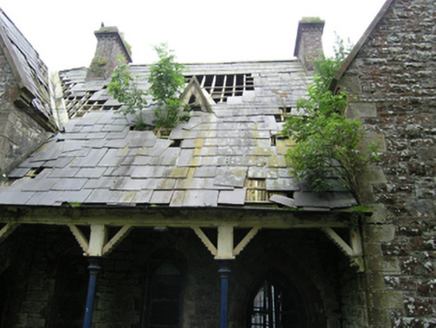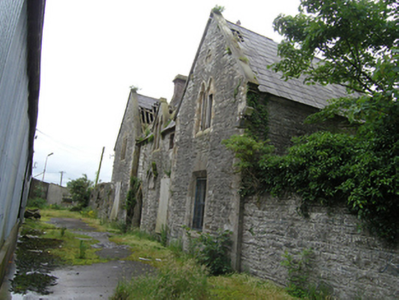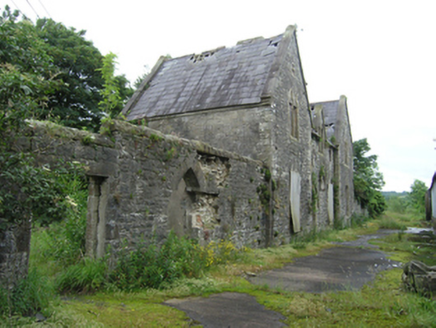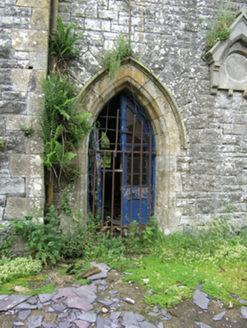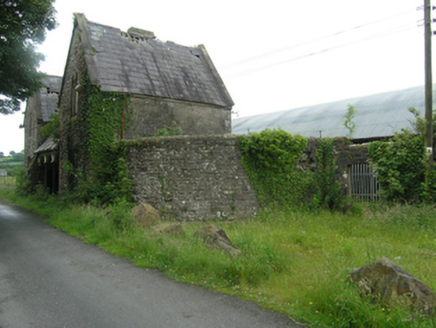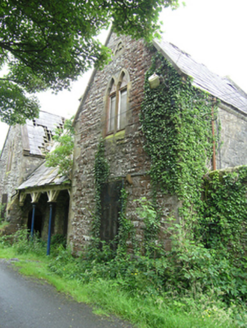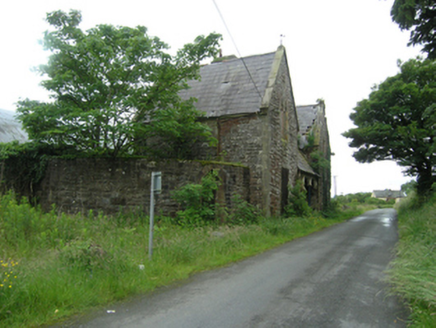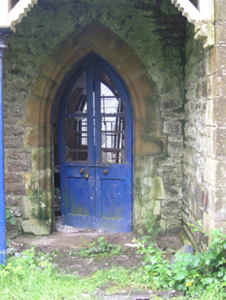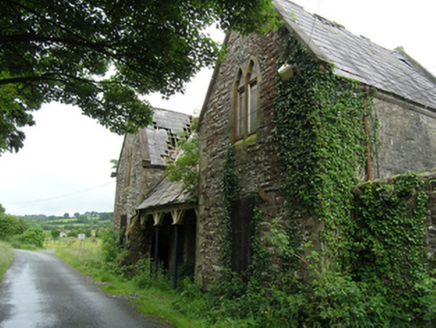Survey Data
Reg No
40401716
Rating
Regional
Categories of Special Interest
Architectural, Historical, Social
Original Use
Railway station
Date
1855 - 1865
Coordinates
261062, 313994
Date Recorded
03/07/2012
Date Updated
--/--/--
Description
Detached Early English Gothic Revival symmetrical-plan five-bay two-storey railway station, built 1860-1, now disused. Steeply pitched slate roof with oversailing stone barges on ogee kneelers, brick chimneystacks with rendered cornices, catslide roof over veranda on entrance side between advanced end bays with gablet in middle of roof with trefoil motif. Some remains of cast-iron rainwater goods. Rock-faced ashlar walls, in places snecked, with hammer dressed blocks quoins and stone cornice. Gables to platform elevation slightly advanced with two-storey section between with central gabled lucarne window. Paired windows having trefoil cusped heads and narrow mullions, and relieving arches over openings. Square-headed windows to ground floor to platform elevation. Gabled aedicule formerly held station clock to platform elevation. Pointed arch door openings with wide sandstone jambs having engaged rolls to chamfers, having roofs supported on metal columns with ogee decorated struts and carved timber lintels. Remains of timber doors and windows. Remains of single-storey rubble-stone rock-faced walls with Scotch coping and dressed pointed arch openings flanking east and west elevations and platform sides, and as quadrant walls on entrance front.
Appraisal
This finely executed railway station has subtly different elevations to entrance and platform fronts, built in an Early English Gothic Revival idiom by the company architect William G. Murray (1833-1871) for the Dundalk & Enniskillen Railway Company. Murray was also architect to the Provincial Bank and had already executed the impressive branch bank in Cootehill at the north end of Market Street. Murray designed several railway stations in the neighbouring counties of Monaghan and Fermanagh. Employing the Early English style enabled Murray to produce a monumental piece of architecture which at the same time was attractive and inviting for the passangers and workers. The sandstone door surrounds, the clock gable, and the veranda to the entrance facade are particularly eyecatching features.
